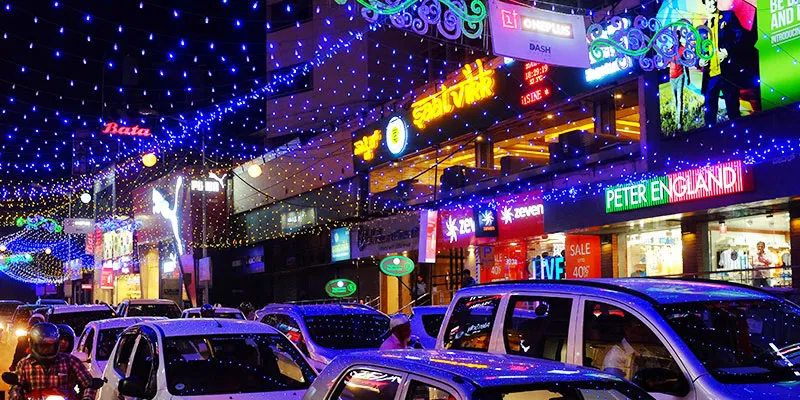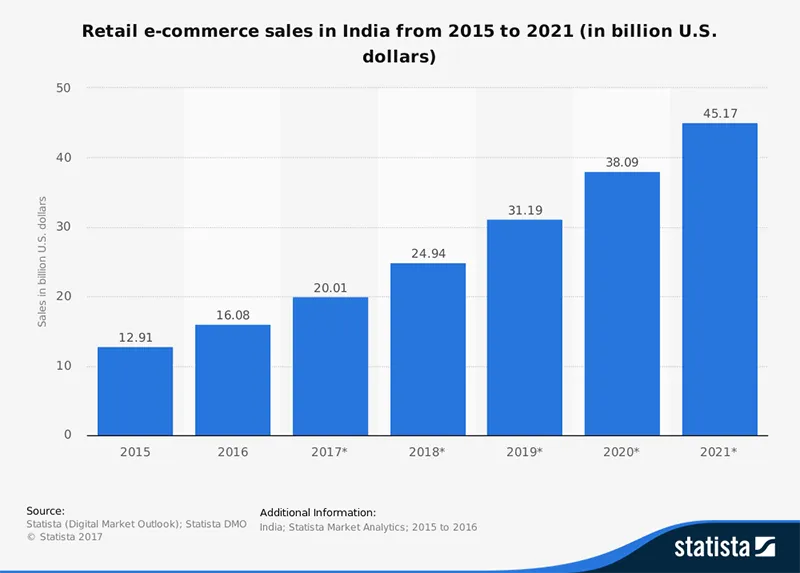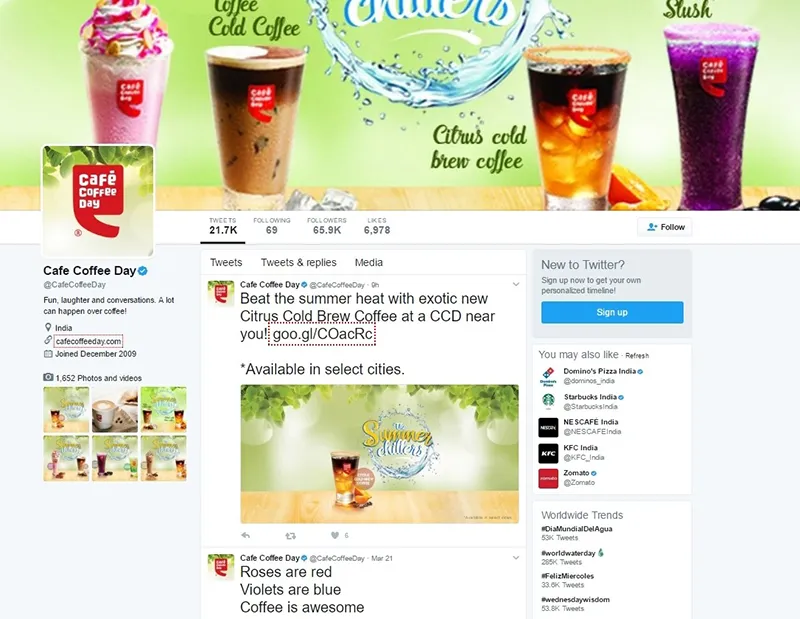E-commerce in India: state of play
The world seems to be watching on excitedly as India fast becomes a major e-commerce player. There is everything to play for in this industry, but many brands are in need of a little guidance. This article will explore what Indian e-commerce brands can do to seize this opportunity and establish themselves, or expand their online market share.

Full steam ahead for Indian e-commerce
Now is the time for India to shine online. Why? Because India is the fastest growing country in e-commerce:
- India’s online population is tipped to reach over 500 million people by the end of 2017, as reported by the Internet and Mobile Association of India
- The value of online sales in India is predicted to reach $48 billion by 2020, according to analytics firm Forrester
- The Brexit negotiations mean that politicians are currently negotiating a deal to offer new opportunities for Indian trade
Let’s explore the rise of e-tailing in India, a phenomenon that’s been driven by both technological and social changes.
Changing behaviours and the rise of digital payments in India

Retail e-commerce sales in India are expected to increase to approximately $45.17 billion by 2021, and this correlates with the yearly rise in the use of internet on mobile devices in the country. (A similar trend of rising mobile purchases is also found across Asia and Western countries as people become more reliant on mobile technology).
The dramatic growth of Indian e-commerce will no doubt have been heavily influenced by Narendra Modi’s demonetisation of the Indian economy, which left many people with little choice but to shop online.
Western e-commerce brands have also taken an interest in India’s maturing commercial scene. Canadian e-commerce startup Shopify announced the release of Shopify.in in 2013 to much fanfare and publicity; a perfect example of how Western companies are seeing potential in the thriving economy of India. Shopify was quick to capitalise on the growing e-commerce entrepreneur and SME market — a demographic that iscontributing to India’s economic landscape with refreshingly diverse voices.
China, the other big e-commerce success story of recent years, has also expressed an interest in entering the buoyant Indian market. The Chinese e-tail giant Alibaba keenly wants to get a slice of India’s market, currently dominated by native Flipkart and Snapdeal, as plans were announced to open an office in Mumbai in late 2016.
So how can Indian e-commerce brands make the most of this change in consumer behaviour and increase in the use of mobile devices to stand out from the e-tail giants?
Help your e-commerce brand grow

Establishing and growing an e-commerce store is challenging, regardless of where in the world you are. However, with brilliant prospects for Indian e-commerce in sight, it is important, now more than ever, to give your online brand a digital tune-up or get yourself set up in the right way. Here’s some advice for you:
- Adopt a multichannel strategy
The term ‘multichannel’ is so much more than just a buzzword. It is vital to offer your shoppers a seamless experience regardless of device. It’s official: the day of the desktop is over, and your e-commerce store needs to be optimised for viewing on any platform to meet the needs of the modern consumer.
- Using a fixed navigation bar for your store’s mobile design will ensure that vital information, such as the home page, shopping basket, and checkout link are always in sight on the page. This makes for a seamless customer experience, which boosts your chances of making a sale
- A grid format can be very useful in ensuring that your store translates well to mobile devices and displays images in a professional-looking way
- Developing an app for your online store can put you in the driver’s seat of your customer’s experience — if you have the time and money, this would be a great option. Apps can be used for anything from sales to news, and serve to bolster customer engagement
Pro tip: Regardless of which platform or device you are optimising for, it is important to include a home button, a checkout link, and an ‘add to cart’ call to action on a navigation bar at all times.
- Let your brand’s personality shine bright

To differentiate yourself from the likes of Amazon and now Alibaba, you should consider offering an insight into your brand’s conception, values, and staff members, in order to give it a human face.
Your brand story could include:
- The reason your company was conceived
- The motivation behind what you and your employees do
- An inside look at your company
iTokri is an online jewellery retailer specialising in tribal Tibetan earrings made of materials from the Himalayas. The ‘About All of Us’ page features great copy which offers an insight into the founder’s desire to showcase the collective creativity of tribal towns and villages. By revealing its identity, iTokri offers far more for site visitors to engage with and this assists in appealing to their target audience to make sales.
- Social media: a powerful tool in your arsenal
It’s no secret that social media is one of the most powerful selling tools available to any company. In fact, according to EY, we are now seeing some brands disclose that they are spending over 31 percent of their marketing budget on social media.

However, you can’t just whimsically post on your social media account and expect your customers to engage with you. Success on social media requires a lot more thought, and a social media content calendar is a must for any ambitious Indian brands.
Café Coffee Day has mastered the use of the Twitter feed. The café chain regularly posts promotional deals and gets involved with hashtags such as #WorldPoetryDay with creative, shareable copy that gets customers talking about their brand.
Takeaways
There are a lot of exciting developments in the pipeline for India’s e-commerce industry. Here’s a roundup of the key points:
- India’s online population is increasing at a rapid pace, as is the number of people accessing the internet on mobile devices
- Retailers need to adapt to the recent changes in consumer behaviour to ensure that they stand out from corporate giants
- Three key ways any Indian e-commerce store can get ahead of the game are: investing in a brand story, adopting a multichannel strategy, and getting to grips with social media content.
(Disclaimer: The views and opinions expressed in this article are those of the author and do not necessarily reflect the views of YourStory.)







